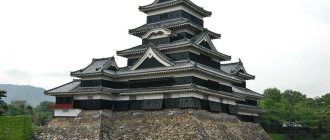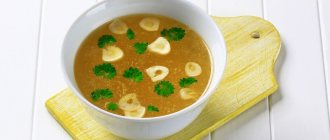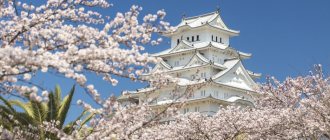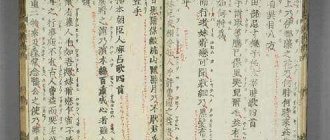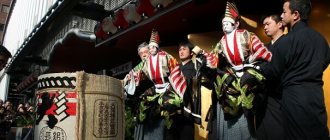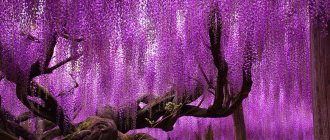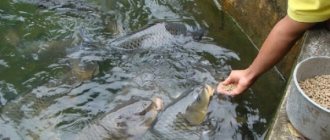The flowering of gardens in Japan is a well-known and widely publicized event. When you mention it, the first thing that comes to mind is sakura. However, there is another decorative and at the same time fruit-bearing tree in the Land of the Rising Sun. This is a Japanese plum. Reviews about it among gardeners are quite a rare occurrence, as is the plant itself, which in our area is considered almost exotic.
What is this fruit?
Its second name is Japanese apricot, or mume. The plant is a representative of the Rosaceae family, Plum genus. Most often it is a deciduous tall tree (5-7 m) with greenish-gray smooth bark, or less often a shrub. Over the course of a year it produces strong growth and green shoots. The leaves are ovoid in shape with narrow-toothed edges; they are pubescent below and sometimes above. The Japanese plum (you can see the photo below) blooms very luxuriantly and for a long time. The amazing spectacle continues for 2-2.5 months: it begins in early spring, and fruiting occurs already in July. The flowers are most often sessile, double or simple, with a strong aroma. They can be white or pink. The fruits are slightly sour, yellow or greenish in color, the stone is difficult to separate from the pulp and has a clearly pitted surface.
In the wild, Japanese plum grows on rocky mountain slopes (300-2500 m above sea level) in northern and central China. It is actively grown in Japan, Korea, and Vietnam.
Japanese plum in culture
People began to grow this fruit tree in their gardens since ancient times. The plant was supposedly brought to Japan in the 8th century from China, and there are now approximately 350 species of plums. It is the mume plum, not the sakura, that blooms first. The tradition of admiring flowers goes back centuries. Wakayama Prefecture is especially famous for the splendor and beauty of mume blossoms. The trees seem to be covered with a fragrant white and pink cloud. Flowering there begins in January and continues until April. But in Europe the plant appeared relatively recently: information about it has been found since 1878. Since then, a large number of decorative forms and garden varieties have been developed.
Acid is good for health
The Japanese have long, based on their own experience, eaten umeboshi as a healthy food product to relieve fatigue, as an antiseptic, to prevent colds, etc. In the Heian era (8th-12th centuries), umeboshi was used as medicine; in the era of the warring provinces, umeboshi was mixed with rice flour and umeboshi balls were made, which were included in the diet of warriors and were highly valued by them.
However, precise data on the effects of umeboshi and their composition are still not widely known. To fill this gap, a “Plum Department” was organized in the Minabe village of the municipality, which is engaged in the popularization of the Japanese plum, holding various events telling about its attractive features, publishing comic books explaining what its properties are and what effect it has on human health.
Top left is Minabe Municipality. At the top right is a counter for citizens of the “Plum Department”, decorated with posters with information about the Japanese plum. Bottom - In 2014, Minabe Township adopted regulations to promote Japanese plums, specifically encouraging "umeboshi onigiri" (pickled plum rice balls)
The cause of umeboshi acidity is citric acid. Umeboshi has the highest citric acid content of all fruits. One small plum contains as much citric acid as several lemons.
Citric acid has a blood purifying effect, it improves blood flow and improves immunity, which prevents the occurrence of colds and flu. In addition, its effect on inhibiting the activity of the Helicobacter pylori bacterium, which leads to gastritis, ulcers and stomach cancer, is also recognized. In addition, it is effective in restoring strength during fatigue. It activates energy exchange in the body and at the same time breaks down and removes lactic acid from the body, which causes fatigue.
Wakayama Prefecture's proud Nankome plum variety, grown in the garden of Kubo Ryuji. The name "Nanko" means "Southern School". The plum variety is named after the local South Area High School, which helped conduct research into plum breeding.
The antiseptic properties of umeboshi are associated with benzoic acid, which is responsible for the plum aroma. It has an antibacterial and bacteriostatic effect, which prevents the development of mold, etc. Onigiri rice balls with umeboshi, or the traditional Japanese flag bento lunch: white rice with a red plum in the middle, have become popular as a take-out food because of these empirically proven properties.
Umeboshi acid stimulates salivation. Saliva not only has the effect of increasing appetite and antibacterial effect, but along with it it also releases the youth hormone parotin, which has the same composition as baby saliva. In addition, the effect of preventing diabetes due to polyphenols, preventing the development of hypertension and atherosclerosis, and stimulating calcium absorption are also called. Recently, it has become known that vanillin, formed when umeboshi is heated, has the effect of inhibiting the growth of fat cells and is useful for weight loss.
There is only one element that is of concern and that is the salt content. It helps prevent heatstroke, but it is best to avoid consuming too much of it daily. This is what Suzuki says about the need for salt in umeboshi.
“A standard salted dried plum contains 20% salt. If its content is reduced, mold will form on the surface of the plum fruit. But if you remove the salt and at the same time pickle the dried plum with honey, perilla leaves, tuna flakes, adding taste, then the salt content will drop to 7-17%. Among tourists from China and Taiwan, for whom the taste of Japanese plums is not new, plums with honey are gradually gaining popularity.”
Regular salted plum, made at plum farm, with 20% salt content. Most locals say, “These umeboshi are the tastiest.”
Use in cooking
Japanese apricot fruits are eaten mainly in processed form, since when fresh they are highly acidic. Famous marinades and pickles are made from them. A traditional addition to a serving of boiled rice among the Japanese is umeboshi - pickled fruits. Also, Japanese plum serves as the basis for creating a liqueur popular in Asian countries - umeshu (pictured).
According to the eastern calendar, the tree itself is a symbol of the New Year and spring. Therefore, for the holiday, the Japanese often give friends a small specimen of plum in a pot.
Fruit
Colored yellow or greenish, the pulp of the fruit is practically not separated from the apricot pit. The taste is sour and somewhat herbaceous. Therefore, the fruits are used only in processed form. Japanese cooks use ume plum in pickled or salted form.
It is generally accepted that eating a salted plum for breakfast will certainly bring good luck. Apricot oil is produced from the fruit, which is completely absorbed by the body, having a beneficial effect on it. Umeboshi - fermented fruits are a traditional accompaniment to boiled rice. In addition, Umeshu liqueur, popular in many Asian countries, is prepared from Japanese plums.
Growing from seed in summer and autumn
This can be done if you are lucky enough to come across fresh aromatic fruits of the tree. The method is quite simple and does not require complex measures and hassle. Knowing how to grow a Japanese plum from a seed, you will have an exotic plant in your home. You can even cultivate it in the garden, although only in warm regions.
You can plant the seeds in the ground or in separate pots. The best time is late July - early August. Natural or artificial stratification will be required for germination in late autumn or early spring, respectively.
If you are not going to plant the seed immediately after eating the fruit, then you need to dry it and save it until the fall, when the first frosts begin. When the time comes, dig a small trench in the garden and fill it with nutritious soil from humus, turf and leaf soil, and sand. Planting depth is 5 cm. Japanese plum usually sprouts in May of the following year.
Japanese plum in our country
The real discoverer who introduced the world gardening community to this amazing fruit is Luther Burbank. He did a lot of breeding work and got new hybrids, some of which are popular to this day.
In its original form, the Japanese plum on a summer cottage in Russia can only grow in its southern regions (Crimea, Caucasus), where there are warm winters and early spring. But the hybrids bred by breeders have higher winter hardiness, and their cultivation area has been noticeably expanded. Growing is possible both from seed and using seedlings.
Where can I find umeboshi?
In Russia, umeboshi is not the most popular product. You can still find Japanese plums in Japanese grocery stores. Although even there, not always, since managers are afraid to import goods for which demand has not yet formed. But if you make a reservation, you will soon have a chance to try real umeboshi.
I managed to find Japanese pickled plums in a Japanese grocery store in Moscow. True, the price is steep - a 500-gram package costs 900 rubles. But health is also worth a lot! Especially when it goes away...
Japanese plum: planting and care
The tree bears abundant and regular fruit. From the moment it occurs, the suppression of annual growth begins. In this regard, the tree requires annual cyclic pruning and crown rejuvenation.
It is noteworthy that all varieties of Japanese plum are not affected by sharka, they are to a small extent susceptible to sawfly and codling moth, which undoubtedly sets them apart from the rest.
How does the Japanese plum behave on the site? Caring for her is supposed to be the same as for her ordinary relatives. Let's focus only on the main points.
- Planting can be done both in spring and autumn. The pit needs to be prepared 2 weeks before the expected date. Its size should be 60 * 60 * 60 cm, the addition of humus is required.
- The surrounding circle must be mulched after planting and watering using peat or compost.
- Fertilizers (organic and mineral) are applied to the tree trunk, depending on the needs of the plant. In spring, nitrogen preparations are needed. They promote growth and gain of green mass. In the second half of the growing season, it is recommended to apply phosphorus- and nitrogen-potassium fertilizers, and in the fall - organic fertilizers (humus and compost).
- Root shoots must be removed within a radius of up to 3 m from the main tree.
- Some varieties require an event such as fruit thinning. When there are too many ovaries, they must be partially removed before they begin to fill. This will improve the quality of the remaining harvest and preserve the tree's strength for next year.
- Japanese plum also needs pruning; it is recommended to do it in spring or early summer, when there are no sudden changes in temperature during the day. This will protect the tree from diseases.
- A good harvest is guaranteed by planting several varieties of plums with different periods of fruit ripening.
- Pick the plums in a slightly unripe state and then they will last much longer.
Most popular varieties
Precocious
The Skoroplodnaya variety is one of the most popular among Russian gardeners who are not afraid to plant Chinese plums. It was also appreciated by those who grow fruits on an industrial scale. This hybrid is the achievement of domestic gardeners who pollinated plum varieties Clymex or Climax (US selection) with Ussuri red pollen. Skoroplodnaya is one of the first experiments in obtaining the Soviet “Chinese woman”, undertaken in the 60s of the 20th century, which turned out to be very successful. Now it is found from St. Petersburg to Vladivostok, demonstrating the best yield indicators in the Central, Central Black Earth regions and the Far East.
The tree rarely reaches a height of more than 2.5 m, the crown is spreading, but quite sparse. The leaves are smallish, light green in color. Even when propagated by seeds, Skoroplodnaya mainly retains varietal characteristics (in 7 seedlings out of 10).
Up to 30–35 kg of fruits are removed from an adult tree. The first time the harvest can be harvested in the second year after planting. The ripening period, depending on the weather, extends from the 20th of July to the first ten days of August.
The average weight of one plum is 30–35 g. It is characterized by a dense whitish or bluish waxy coating, with no pubescence. The fruits have the shape of an almost regular ball, the funnel at the place of attachment of the stalk and the seam on the side are very weakly expressed. On one tree, the color of fully ripened plums varies from bright yellow to scarlet, passing through all shades of orange along the way. It resembles the colors of dawn or sunset. A pinkish blush on the sunlit sides of the fruit is normal.
The pulp is always yellow, not very dense, but suitable for making juices. The taste is sweet and sour; the smell of Skoroplodnaya is easy to confuse with melon. An additional plus is the vitamin C content comparable to cherry plum (more than 10 mg per 100 g). The average taste rating is 4.5 points out of 5. At a temperature of about 5ºC, plums will be stored for 3–3.5 months.
The choice of pollinators must be approached carefully. Skoroplodnaya is quite demanding in this regard. The best choice is Red Ball or any hybrid cherry plum (Russian plum). It is advisable to have at least three trees on the site.
Rest breaks are typical. Every 2-3 years the plum tree does not bear fruit. Skeletal shoots and flower buds are extremely rarely affected by frost. For its ability to adapt to unsuitable climatic and weather conditions, Skoroplodnaya is highly valued by breeders.
Thanks to the variety of shades, the Skoroplodnaya plum looks very elegant
Superior
Plum Superior is a variety of Japanese selection. Positioned by the creators as partially self-fertile. By the way, there will be pollinators - cherry plum or other Chinese plum.
Productivity is consistently high, annually. Plum picking begins towards the end of the second ten days of August. The fruits deserve the most flattering reviews due to their size (70–75 g) and taste. Superior is considered a dessert variety (4.7 points out of 5 for taste). The skin of plums has a pastel yellowish-purple color. Characterized by multiple small white and black dots. The pulp is bright, orange.
The maximum height of the tree is 2.5 m. The growth rate of Superior is no different. When the yield reaches its maximum, it decreases further. Therefore, the plum tree needs regular, well-carried pruning for the purpose of rejuvenation.
The variety is resistant to one of the most dangerous diseases that cannot be treated - smallpox (or sharka). The plum moth avoids Superior.
Superior is a Japanese variety popular throughout the world, sometimes simply called “Japanese plum.”
Alyonushka
Alyonushka is the result of cross-pollination of seedlings of the Chinese and Krasny Shar varieties, carried out at the Oryol branch of the All-Russian Institute of Fruit Crop Breeding at the very beginning of the 21st century. The result was a low (about 2–2.5 m) tree with a crown similar to a broom placed with the handle down. The fruits, which ripen on the 10th of August, are distinguished by their attractive appearance and excellent taste (4.8 points out of 5). Alyonushka blooms a little later than the other “Chinese” flowers - closer to the end of the second ten days of May. The flowers are lush and large.
Alyonushka is a dark burgundy spherical plum with a lilac tint, weighing on average about 40 g. Sometimes, depending on the place of cultivation, a ripe plum has a rich, dark crimson tone (professional artists call it scarlet). The fruits do not crack, even if the summer is very rainy. Approximately 20 kg of plums are removed from one mature tree. The indicator is far from a record, but you can safely count on annual fruiting. A characteristic feature is a thick layer of bluish waxy coating.
The pulp has a rich orange hue and a very pleasant sweet taste with a slight sourness. It is dense to such an extent that sometimes it even crunches. The stone is very small and, unlike the vast majority of varieties of Chinese plums, is relatively easily separated from the pulp. When torn from the stem, the plums are not injured.
The best pollinator is Skoroplodnaya, but in principle, any variety of Russian or Chinese plum that has similar flowering periods is suitable. Alyonushka practically does not suffer from moniliosis and clasterosporiasis, but is more sensitive to cold weather (it tolerates frosts down to -30ºС without damage). The tree is greatly harmed by winters, when the temperature stays at -10–15ºС and there is heavy rainfall. Another significant disadvantage is that for some reason this variety is especially distinguished by aphids, which greatly reduces the yield.
Alyonushka is little damaged during transportation, but cannot boast of keeping quality indicators. In the refrigerator or in the cellar, in an optimal microclimate, the fruits will last about a month.
Plum Alyonushka is wonderful for everyone, except for the great love that aphids have for her
Red ball
Chinese plum Red Ball is an achievement of Soviet breeders. Scientists crossed the Burbank and Ussuri Red varieties.
The tree has an average height for the described group of varieties (2.3–2.5 m) and a spherical crown at the top with hanging lower shoots. You can't call it thick. The variety can be identified by its small leaves with a highly developed central vein. Because of this, the sheet plate is slightly concave.
Plums form a red ball only on the shoots of the previous season and the so-called bouquet branches. This must be taken into account when pruning, maintaining a constant length of fruiting shoots at 60–75 cm. The fruits ripen on the 10th of August. If the fruits are not removed from the tree in time, the overripe Red Ball will quickly crack and burst.
The name of the variety is due to the appearance of the fruit. They are quite large (40–45 g), bright scarlet, almost round, the side seam is almost invisible. The skin is covered with a matte bluish coating in the form of separate spots.
The flesh of the Red Ball is lemon-yellow, soft, very juicy and aromatic; looseness and fibrousness do not spoil it at all. Despite these properties, transportability indicators are good. The taste is rated 4–4.2 points - nothing special, but very decent. However, it is believed that these plums are not for everyone. With some effort, the stone can be separated from the pulp.
The red ball is extremely rarely affected by clasterosporiasis. Cold resistance and yield indicators are average. This variety of Chinese plum is especially popular in the Moscow region. There (and not only) it is valued as a universal table variety.
The variety was intended by the creators to be self-fertile, but the presence of pollinating plums is welcome. The most common option is Skoroplodnaya.
Plum Red Ball noticeably loses to other “Chinese” plums in terms of taste
Manchurian beauty
Manchurian beauty is one of the oldest varieties of domestic Chinese plum, known since the late 20s of the 20th century. It spontaneously arose at the Yaomen experimental station in Manchuria. Further research of the seedlings, which took place in the Far East, showed that among its “relatives” are the Ussuri, Chinese plums and an interesting variety of Simon plum, sometimes called apricot.
The tree (some experts call it a bush, since there is no clearly defined central shoot) has a height of 1.6–1.8 m. The crown is almost spherical, very thick. With such dimensions, the leaves are quite large - 10–13 cm in length. The flowers are very small. The bark noticeably peels off, even on young shoots.
The plums themselves cannot be called anything other than inconspicuous. They are small (no more than 20 g, more often 12–15 g) and slightly flattened. The place of attachment of the stalk is deeply recessed, the side seam is almost absent. No more than 10–12 kg of fruits are harvested from one tree, 7–8 kg in particularly bad years. The skin is dense, yellowish-orange. But this color is almost completely covered by the burgundy-purple blush. Sometimes a bluish tint is noticeable.
The pulp is greenish-yellow, hard and sour, almost tasteless, with a clearly noticeable characteristic aroma. Its dignity is juiciness. Nevertheless, the Manchurian beauty can still be found not only in Siberian and Far Eastern gardens, but also west of the Urals.
For Chinese plums, this variety ripens very late - at the end of August or even in early September. You cannot delay harvesting - the fruits fall off en masse and very quickly. However, such a fall does not harm them too much. The dense flesh is little damaged.
The Manchurian beauty tolerates winter cold down to -25–30ºС and suffers little from prolonged droughts. Susceptible to rubella, moniliosis and clasterosporiasis.
Without pollinators there will be no harvest at all. The Ussuri plum is well suited for this purpose.
Gardeners in Siberia and the Far East most likely grow the Manchurian beauty out of habit
Sissy
Nezhenka is a relatively new variety, the result of cross-pollination of Skoroplodnaya and Kitayanka seedlings. This tree is about 2.5 m high with a spherical, not too thick crown. Compared to other Chinese plums, Nezhenka blooms even more beautifully - the number of flowers in the inflorescence reaches 5, the calyxes resemble bells.
The fruits are medium-sized (25–35 g), spherical, one-dimensional. A small dent is noticeable on the base - as if there is “compensation” for the fact that there is almost no funnel at the place where the stalk is attached.
Nezhenka plums are bright scarlet, with pale yellow tender flesh, not too sweet, but literally melting in your mouth. The fibers in it are invisible. The stone is easily separated from the pulp, and the plum is separated from the stalk. The taste of the fruit is rated 4.2–4.5 points.
You will have to wait quite a long time for the first harvest - 5 years. Nezhenka blooms in the second decade of May, the fruits ripen after 3 months. They must be removed immediately so that they do not fall off. The vast majority of plums are tied on bouquet branches.
The sissy is rarely affected by clasterosporiasis and is positioned as partially self-fertile. The average yield is 30 kg per tree, in particularly successful years it is about 40 kg. The tree tolerates frost well, which cannot be said about flower buds.
Nezhenka are plums with an almost regular spherical shape and a very decent taste.
Oryol dream
Oryol Dream is one of the new products of domestic selection. The variety recently celebrated its 10th anniversary. The parent of the hybrid is the plum Alyonushka. The Oryol dream arose as a spontaneous mutation, in the process of free pollination. The hybrid demonstrates its best qualities in its homeland - in the Central Black Earth region.
The variety is valued for its large (40–45 g) fruit size and its attractive appearance. Red-violet plums have many small subcutaneous dots of a darker brown color and a thick layer of bluish bloom. The pulp is yellowish-brown, amber, the juice is completely colorless. The pulp is not too dense and consists almost entirely of fibers. It is almost impossible to separate the small round bone from it.
Taste qualities are rated at 4.5–4.7 points. Orlovskaya Dreama plums are very sweet. This is due to the low acid content (slightly more than 1% of the total mass). The harvest is harvested in the first ten days of August. Average figures are 20–25 kg per tree.
The maximum height of an adult plum is 2.5 m. The spreading, sparse crown looks like an inverted pyramid. Almost all branches stretch upward. The bark is very peeling.
A significant advantage is partial self-fertility. However, pollinating varieties never hurt. Orlovskaya Dream is also distinguished by almost record levels of frost resistance. This applies to both the tree itself and the flower buds. Plum is not afraid of clusterosporiosis. There is only one drawback - the more fruits are set, the more their size decreases. The average harvest weight remains approximately the same.
Orlovskaya Dream is one of the record holders among Chinese plums in terms of frost resistance.
Golden ball
Chinese plum Golden Ball is one of the earliest varieties that ripen in a temperate climate in the European part of Russia. The tree, compared to other “Chinese” trees, is tall - up to 4 m, with a spreading crown.
When it comes to fruits, the name says it all. The plums are spherical, bright yellow with a translucent pinkish-orange tan. They reach 60–65 g in weight. The flesh is slightly lighter, golden, very sweet, aromatic and juicy. Only at the seed you can feel a slight sourness. The Golden Ball tastes very much like pineapples. Some tasters, however, think these are notes of peach. The fruits “clumping” on the tree evoke associations with sea buckthorn.
From afar, the Golden Ball plum evokes associations with a giant sea buckthorn bush
Oryol souvenir
Oryol Souvenir is a variety of Chinese plum of medium ripening, found mainly in its homeland, in the Oryol region. Among its “relatives” are the plums Sister of the Dawn, Giant, and Chinese.
The tree is about 3 m in height, but takes up a lot of space due to its spreading, sloppy crown, reminiscent of a haystack. Although it is quite easy to care for it, because it is not very thick.
The average weight of one plum is 30–35 g. The skin is colored inky-purple. Characteristic spots are bluish-gray. The pulp is brownish, amber, has a balanced sweet and sour taste, rated 4.0–4.2 points. Oryol souvenir - the plum is loose, but rather dry.
The fruits ripen only in the first ten days of September. You will have to wait 5 years for the first fruiting. Productivity is highly dependent on the weather. The minimum is 15–20 kg, in particularly successful years it doubles. The variety is partially self-fertile and has good resistance to cluster blight.
Oryol souvenir - plums, mainly used in home canning
Japanese plum varieties
- Alyonushka is the most famous variety. The appearance is sharply different from the European plum we are used to. The tree grows to medium height and has a dense spherical crown. The weight of the fruits is up to 40 g, they are pink in color and have a short stalk. The pulp is sweet and juicy and does not separate from the stone. The variety has high frost resistance.
- Skoroplodnaya is perhaps the only variety that can be found and grown even in the Urals. The main advantage is the low-growing crown and rapid entry into the fruiting period. The fruits are bright red, smaller in weight - only about 20 g.
- Shiro (pictured above). It was developed at the end of the 19th century by L. Burbank. The tree grows tall and has a pyramidal crown. The fruits, weighing 25 g, have a lemon color and soft, juicy flesh with veins. This is a frost-resistant hybrid Japanese plum. “How to grow such a miracle at home?” - many will ask. It's simple: caring for it is the same as for ordinary, zoned species.
- Red heart (pictured below). The name is related to the shape of the fruit. They are large (up to 60 g), dark red in color, juicy, with a pleasant dessert taste. The tree is tall with a spreading crown.
When grown in our gardens, Japanese plum deserves much more attention. The plant has a number of positive qualities, including high resistance to disease, keeping fruits (if picked while still green, they ripen without problems at home without losing their taste), and ease of care.
Umeboshi should also be popular abroad.
“We took part in a foreign food exhibition in Turkey for the first time. I have seen visitors who, as soon as they put umeboshi in their mouth, immediately spat it out. We experienced a great shock,” says Suzuki Takafumi, chief executive of , whose head office is in Wakayama Prefecture. opened a plant in Minabe Township, Hidaka District, the same prefecture where Japanese plum farmers are concentrated, and produces and sells the Nankome variety of plums from Kishu Province, which is considered exclusive. Large premium umeboshi plums undergo strict quality control, each individually packaged and placed in a box. They have become popular: umeboshi are bought as gifts for the O-Bon midsummer festival and at the end of the year, used as gifts for guests at a wedding ceremony. The company is proud of its products, so the reaction to umeboshi in Turkey “it is impossible to eat such sour meat” was shocking.
Shokibai products Kiwami line (top), 10 pieces per pack, price 2700 yen (including tax). Photo courtesy of Shokibai
However, Suzuki did not despair and continues to actively try to enter foreign markets. He believes that not only the taste of umeboshi, but also its health benefits will appeal to overseas consumers.
“Both green wasabi horseradish and pickled ginger were once foods that were not popular with foreigners. But thanks to the fashion for sushi all over the world, many foreigners now add wasabi and eat ginger in larger quantities than the Japanese. I believe that the same success awaits umeboshi: they will immediately spread throughout the world, you just need to prepare the dishes and recipes for the dishes with which they are combined. The popularity of Japanese cuisine overseas has a lot to do with its healthy food image. If the various health benefits that umeboshi bring become widely known, they will certainly gain popularity,” says Suzuki.
Kubo Ryuji (left) is a plum farmer contracted with Shokibai and Suzuki Takafumi (right): “We strive to improve the quality of Japanese plums in response to new challenges.”

